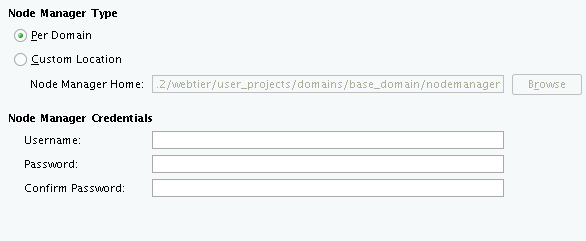
I was surprised to see that Oracle WebTier 12c release has been available from OTN since June 2013. It comes with big changes. I guess that marketing Oracle Database 12c encouraged the outcome of newer versions of Oracle Middleware products such as Oracle WebLogic Server 12.1.2, Oracle Coherence 12.1.2, and Oracle WebTier 12.1.2.
Oracle WebTier 12.1.2 includes the following features:
- Oracle HTTP Server (OHS)
- Oracle WebLogic Web Server Plug-In
In this blog posting, will concentrate on the new OHS features. The most important change is the integration via the WebLogic Management Framework instead of Oracle Process Monitor and Notification (OPMN).
Where to get it?
You can download it from the OTN. It is called Oracle WebTier Utilities 12c Installation.
These are the Oracle WebTier Utilities 12.1.2 features and components
- Oracle HTTP Server (OHS)
- Oracle WebLogic Management Framework
- Oracle WebLogic Web Server Proxy Plug-in
- Oracle WebGate Plug-in
- Fusion Middleware Upgrade Assistant
- Remote Diagnostic Agent
- Configuration Manager
You can download it here.
The main changes are the provisioning and management capabilities.
Provisioning
The provisioning of OHS 12c can be performed in two different topologies.
1. Administration of OHS 12c through the WebLogic Domain
This kind of topology requires a valid installation of Oracle Fusion Middleware Infrastructure 12c.

It is called “Standard Installation Topology for OHS 12c in WebLogic Domain”.
2. Administration of OHS 12c through the standalone Domain
The provisioning requires no additional dependency. The administration is executed through a command line API available within the WebLogic Management Framework, precisely WLST. The major advantage is that it can be administrated remotely through its Domain.

This kind of topology is called “Standard Installation Topology for OHS 12c in Standalone Domain”.
A third topology exists, which is the HA implementation. It consists of the OHS installation (typo 1 or 2) on two separate hosts.
Management
The integration of the WebLogic Management Framework is done through WebLogic NodeManager. It enables to manage the OHS lifecycle.
In the two different topologies defined above, each configured instance will be stored in the user_projects directory which contains the OHS Domain. Note that the “Domain” notion will be omnipresent in the Oracle Middleware stacks.
Each instance is linked to the WebLogic NodeManager during its configuration.

A Node Manager can be configured per domain (the configuration is located in domain directory) or for multiple domains (with some or all domains from a machine).
Main Node Manager capabilities
I refer to WebLogic server instances such as the Admin Server, Managed Servers (Java components). Since now, Node Manager also manage system components such as OHS.
- Starting and stopping remote server instances
- Monitoring the self-reported health of server instances and automatically killing server instances whose health state has “failed”
- Automatically restarting server instances that have a “failed” health state, or have shut down unexpectedly due to a system crash or reboot
Yes cool but what are the new features? And which ones are not available anymore?
Removed features
The integration with Oracle web cache is no longer included and has been removed. In my opinion, this features has been removed to make people use Oracle Coherence.
Some other modules are not included anymore such as mod_oradav and mod_osso, as Oracle Webgate is the recommended replacement. SSO plug-ins for third-party Web Servers (IIS and iPlanet) have also been removed.
New features
I will explore the most interesting new feature, introduced with the 12.1.2 release, which is the integration in the WebLogic Management Framework.
Oracle Documentation defines it as follows:
A set of tools that leverage Oracle WebLogic 12c (12.1.2) interfaces to provide a simple, consistent, and distributed framework for managing Oracle.
The major changes of this new framework
- A new configuration wizard for the creation of OHS instances
- A remote management of OHS instances
- The configuration files are part of a WLS domain in standalone, cohabiting with WLS Server.
- The framework is completely managed within WLST
- The opmn.xml specific configuration is now configured in ohs.plugins.nodemanager.properties
A point that surprised me concerns the OHS MBeans: These are subject to change without notice and are not supported for any use other than the Oracle management tools.
Conclusion
The integration in the WebLogic Management Framework is a major step and it is difficult to grasp it without sound knowledge of Java-based WebLogic Server.
![Thumbnail [60x60]](https://www.dbi-services.com/blog/wp-content/uploads/2022/08/ABE_web-min-scaled.jpg)
![Thumbnail [90x90]](https://www.dbi-services.com/blog/wp-content/uploads/2022/08/MOP_web-min-scaled.jpg)
![Thumbnail [90x90]](https://www.dbi-services.com/blog/wp-content/uploads/2022/08/ATR_web-min-scaled.jpg)